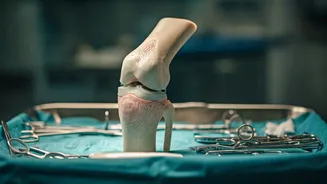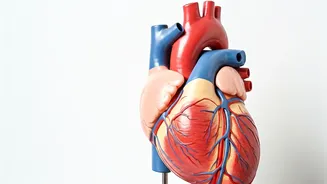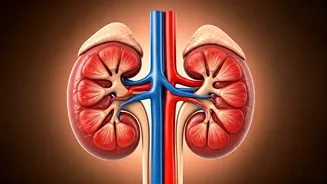Initial Post-Op Period
The first few days following a knee replacement are crucial for setting the stage for a successful recovery. Managing pain effectively is paramount during
this time. Doctors usually prescribe pain medication to alleviate discomfort, which may range from oral pills to injections, with the exact dosage and type being determined by the individual's needs and the severity of the pain. Proper wound care is also critical; this involves keeping the incision site clean and dry to avoid infection. Regular monitoring for signs of infection, such as increased redness, swelling, or discharge, is essential, and any concerning symptoms should be reported to the healthcare provider immediately. Another key aspect is starting gentle exercises as early as possible, as these can help maintain range of motion and prevent stiffness. These exercises may include simple movements, like ankle pumps and quad sets, that can be done while resting in bed or sitting up, and should be performed as recommended by your physical therapist.
Pain Management Strategies
Effective pain management is central to a smoother recovery after a knee replacement. Several strategies, beyond medication, can help in controlling pain levels. Applying ice packs to the knee for 20-30 minutes several times a day can help reduce inflammation and numb the area, providing considerable relief. Elevating the leg can also reduce swelling, thus lessening pain. The height of the leg should be above the heart to maximize the benefits. Physical therapy plays a crucial role in pain management. Through customized exercise programs, physical therapists help regain motion and strength, while also providing pain-relieving techniques like massage and other modalities. The type of medication and dosage is determined by a doctor based on the individual's needs. The gradual tapering of medications is often part of the plan as the pain subsides and healing progresses. Patients are encouraged to communicate with their healthcare providers regarding any concerns about pain levels so that the treatment plan can be adjusted accordingly.
Boosting the Healing Process
Several factors and practices can positively affect the healing process. Proper nutrition plays a major role, and incorporating a diet rich in protein, vitamins, and minerals helps the body repair tissue and build strength. Foods like lean meats, fish, eggs, and dairy products provide essential protein, while fruits and vegetables supply crucial vitamins and minerals. Rest is equally important. Adequate sleep allows the body to focus on healing; it's recommended to establish a regular sleep schedule and create a relaxing bedtime routine to optimize the sleep quality. Staying hydrated is also key. Water helps to transport nutrients, remove waste, and maintain cell function, all critical aspects of healing. Following the exercise plan set by your physical therapist can also help to accelerate healing. These exercises are designed to enhance blood flow to the surgical site and promote tissue repair. Additionally, adhering to the post-operative instructions given by your surgeon, such as wound care and activity restrictions, helps prevent complications and supports the body’s natural healing capabilities.
Long-Term Recovery & Mobility
The journey doesn't end after the initial recovery period. Long-term recovery is about regaining full mobility and improving the quality of life. Consistent physical therapy is important to continually improve strength, flexibility, and balance. Regular exercise, as prescribed by the physical therapist, is essential to sustain gains. The exercises may shift in intensity as time goes on, aiming for more advanced movements as strength and flexibility improve. Gradually increasing activity levels is a key element in restoring function and confidence. This involves a planned approach to incorporating daily activities like walking and climbing stairs. The individual’s progression should be based on their personal comfort levels. Keeping a healthy weight reduces stress on the new knee joint and is important for long-term health. Following the advice given by the healthcare team will give the best chances for a successful recovery.
Possible Complications & Help
It is important to be aware of potential complications and when to seek medical help. While a knee replacement is generally successful, complications such as infection, blood clots, or implant problems can arise. Seek medical attention immediately if you encounter symptoms like increasing pain, redness or swelling around the incision site, fever, or any signs of blood clot, such as leg pain, swelling, or shortness of breath. Not every case needs intervention and seeking professional medical advice is essential. Early intervention can often prevent complications from worsening. Following all of the instructions given by your surgeon and physical therapist will also help in preventing issues. Regular follow-up appointments with your healthcare team allow for monitoring of progress and the timely addressing of any concerns. Patient education and participation in self-care are essential factors in preventing complications and maximizing the long-term success of the knee replacement.











